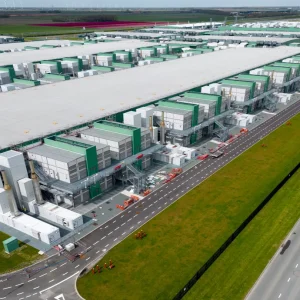
On Tuesday the 5th of January AWS lowered its cloud pricing for the 51st time, by Friday Google had come out fighting to claim its cloud is actually cheaper.
The cloud pricing battle has got off to a quick start in 2016 with Miles Ward, Global Head of Solutions, Google Cloud Platform, writing on the company’s blog: "In case you’ve been reading recent announcements and were wondering, rest assured: Google continues to be the price/performance leader in public cloud."
This is clearly a direct response to the AWS price reduction for EC2; AWS made a 5% reduction in pricing for C4, M4 and R3 Instances across a number of its regions.
Ward went on to say that its most comparable custom machine types are 15% to 41% less expensive that Amazon’s latest prices, but this does depend on configuration.
The company highlighted three examples where Google is cheaper; the AWS M4 "Standard" would cost $87.60 a month while Google’s Cloud Platform Customer 2 core, 8gb comes in at $54.82; working out at 37.42% less expensive.
AWS C4 "HighCPU" costs $76.65 a month; GCP compared that to its Customer 2 core, 3.75gb offering at $44.66 per month; a saving of 41.74%.
Google has been particularly strong with its words, claiming that while price cuts are appealing on the surface, the specifics can be an "unpleasant surprise."
Ward said: "We often hear from customers who are locked into contracts and aren’t eligible for the new rates, or are stuck with instances that no longer fit their needs."
Of course, it is unsurprising to hear a major competitor criticising the market leader and the blog post follows up its claims about AWS with a list of reasons why GCP is better.
The race to the bottom for cloud pricing has seen near continuous price drops being rolled out by the big three public cloud players, AWS, Microsoft Azure and Google Cloud Platform.
Comparing cloud pricing and services is a tricky business with services very rarely being entirely the same in terms of what they offer.
Price does clearly matter to businesses and particularly clear pricing as a cloud service can often look cheap to start with but a failure to control it can see prices rise, something that can leave your accountants and CIOs scratching their heads.
The big cloud players have been addressing the problem of pricing visibility and also how to get the most out of the cloud services you use.
AWS produced a tool called Trusted Advisor, which is designed to make both cloud services easier to understand and advises on getting the most out of the service.
Google offers a TCO Pricing Calculator and Microsoft Azure also has its own pricing calculator that lets you work out the cost of your Azure features.
If you don’t happen to trust what the big three public cloud players are saying about their prices, there are also pricing comparison sites that can offer a more independent view on what is cheaper.






